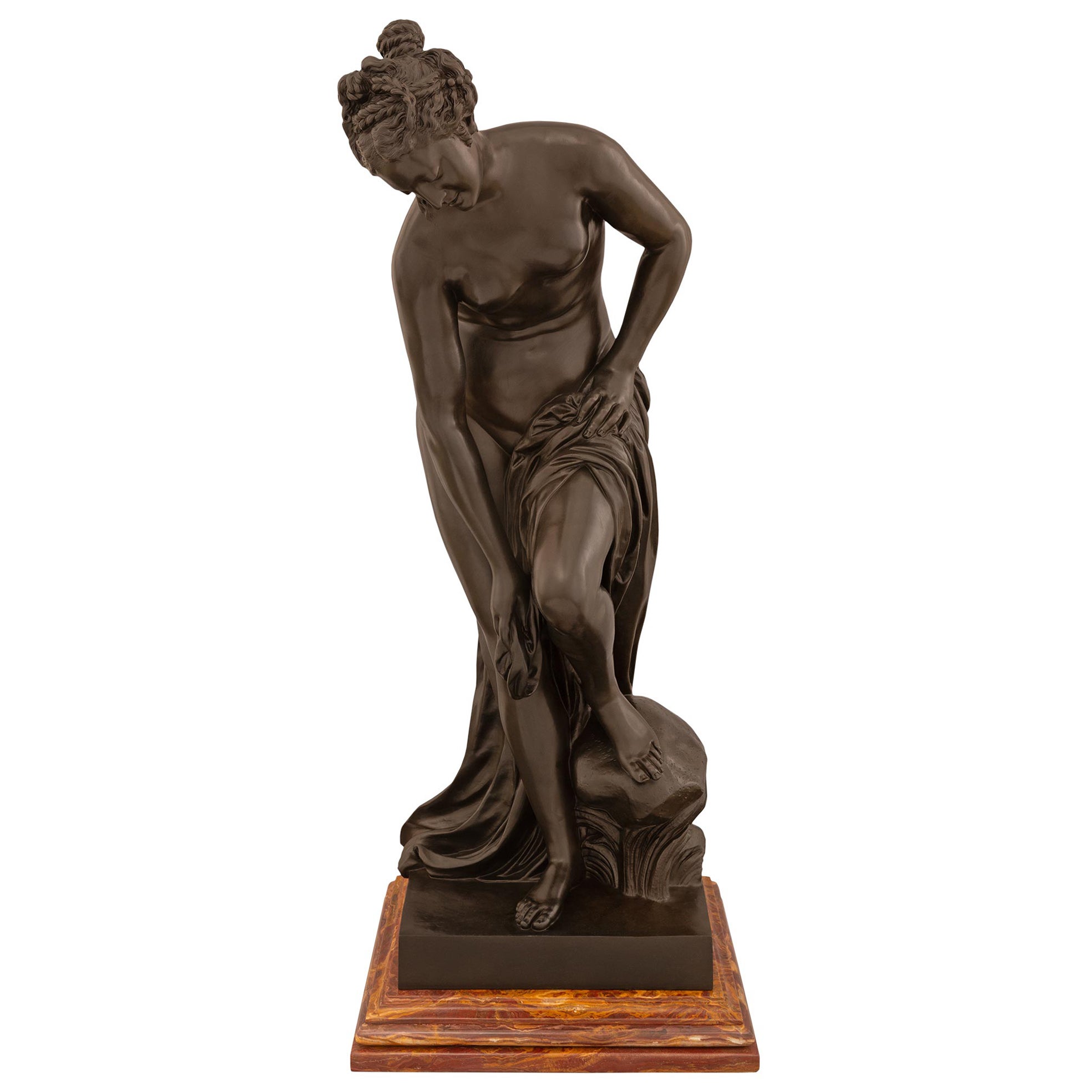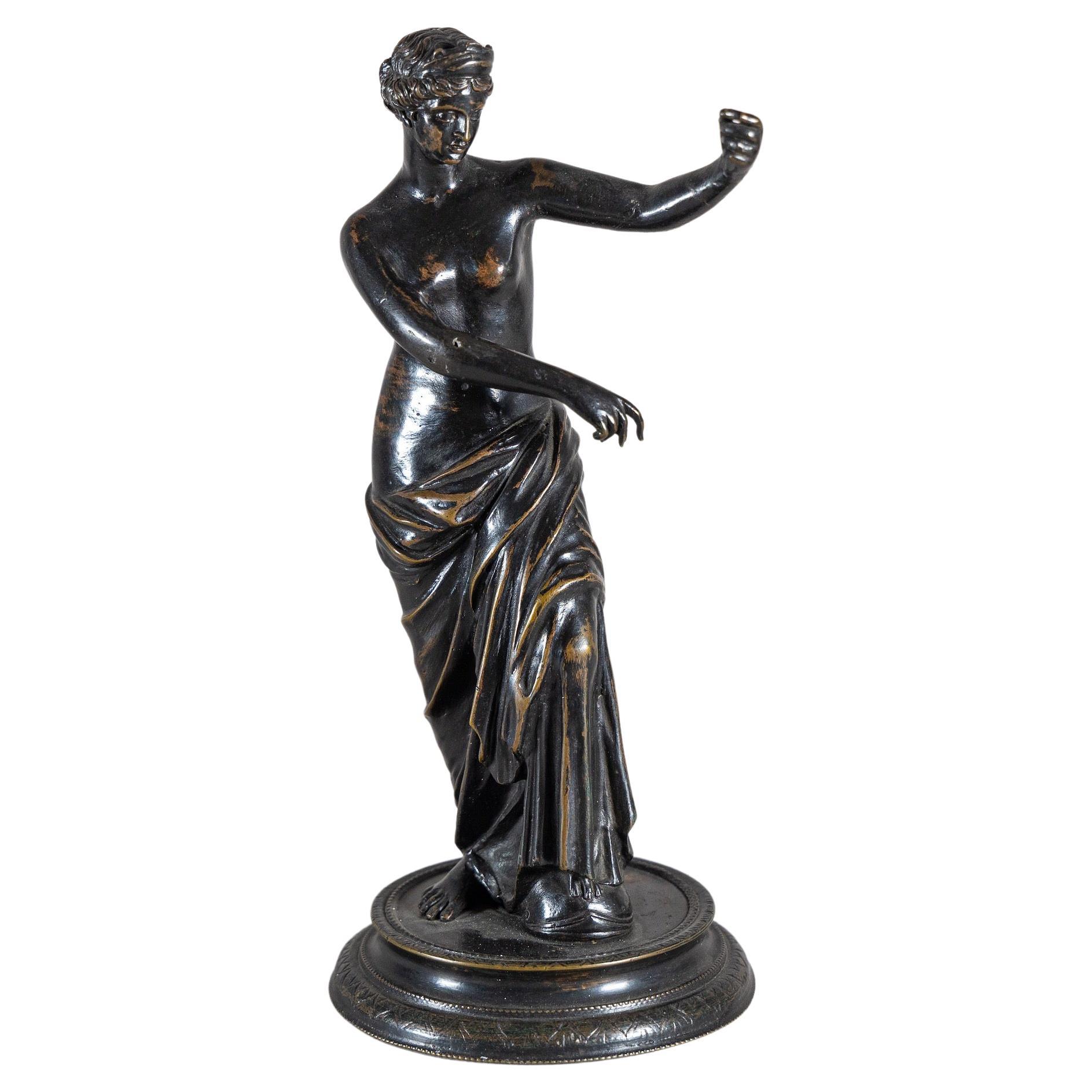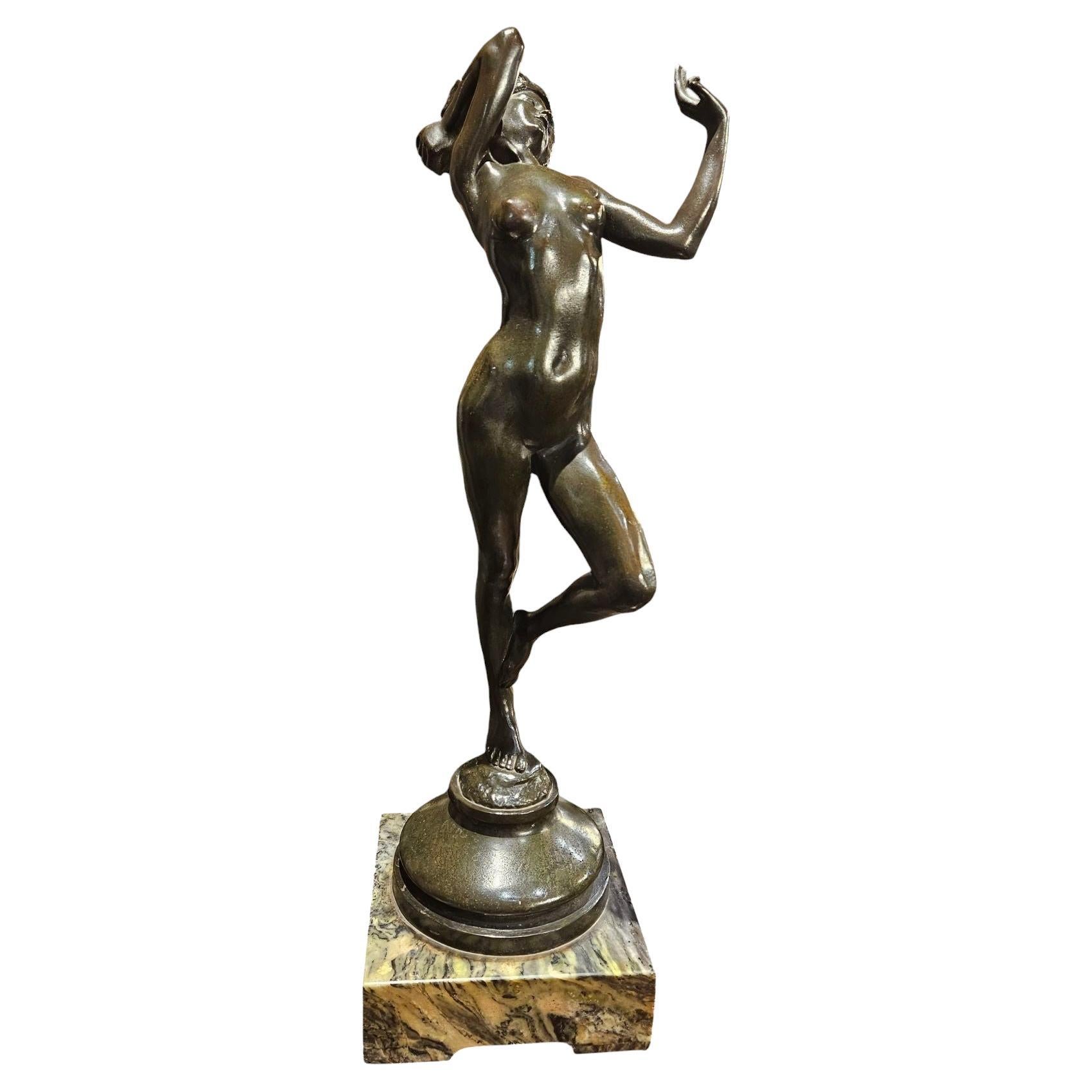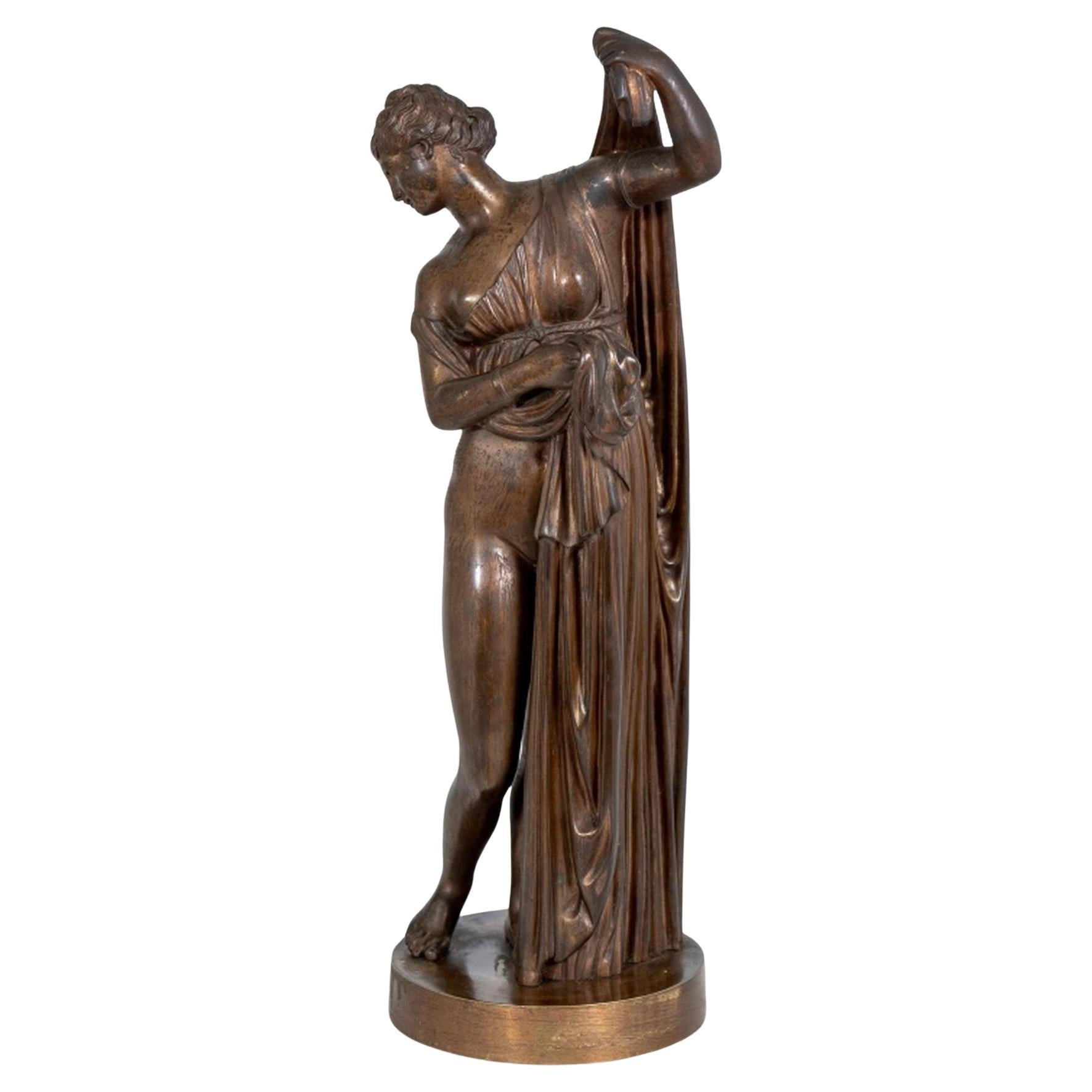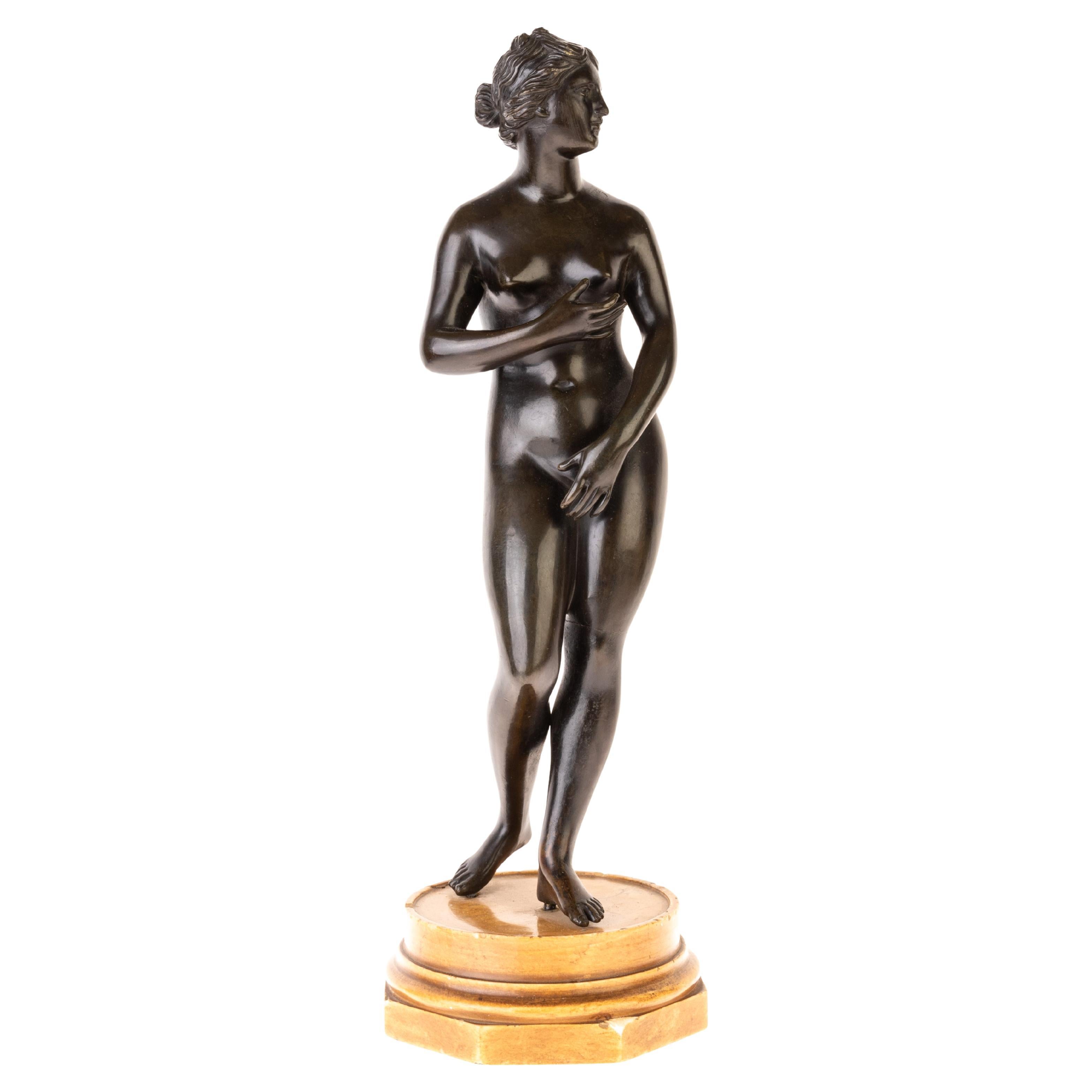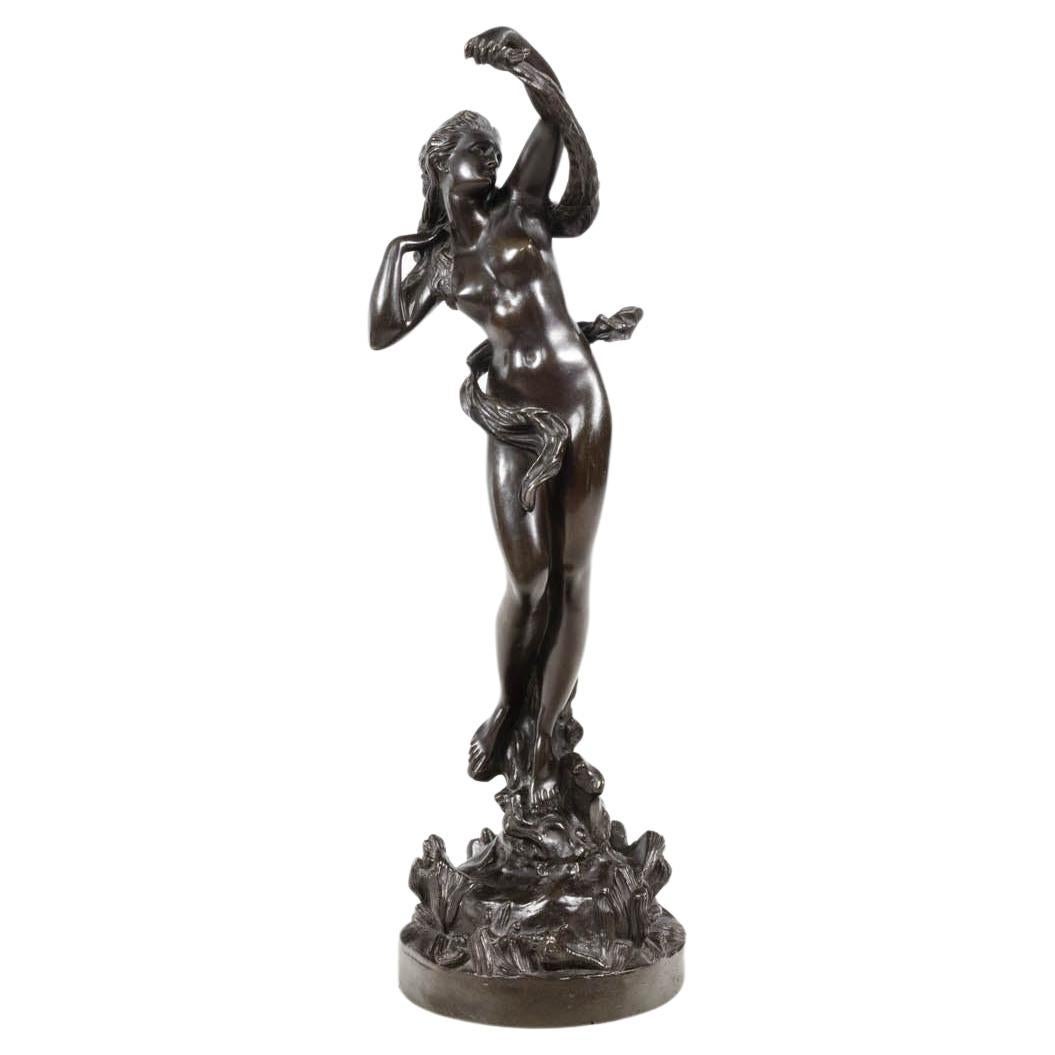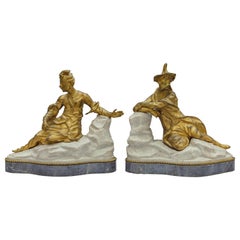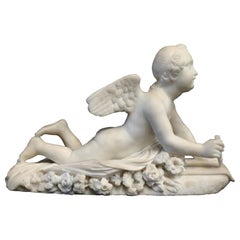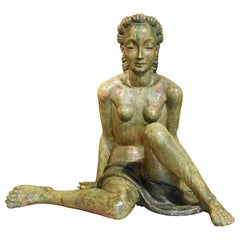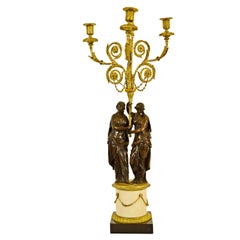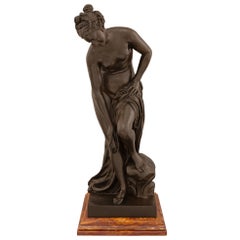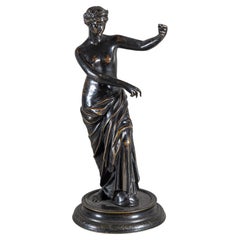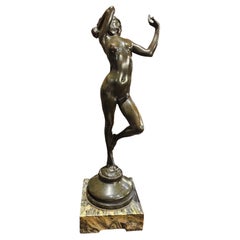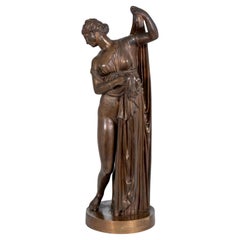Items Similar to 18th Century, Italian Bronze Sculpture with Venus Removing Her Sandal
Want more images or videos?
Request additional images or videos from the seller
1 of 17
18th Century, Italian Bronze Sculpture with Venus Removing Her Sandal
$4,533.26
£3,351.07
€3,800
CA$6,287.87
A$6,855.15
CHF 3,622.13
MX$84,302.20
NOK 45,038.25
SEK 42,397.55
DKK 28,935.04
About the Item
18th Century, Italian Bronze Sculpture with Venus Removing Her Sandal
This bronze sculpture represents Venus as she takes off her sandal. Made in the neoclassical era in Italy, it consists of the bronze sculpture of the Greek goddess Aphrodite, Venus for the Romans. The naked goddess, getting ready for the bath, makes the very human gesture of loosing a sandal.
The left arm is raised, as if to compensate the position while maintaining the balance. Next to her, wrapped around a rocky spur, is a dolphin, an animal iconographically linked to the goddess because of his birth from the foam of the sea. The figure rests on a cylindrical and concave bronze base, with finely chiselled reserves. The bronze element is in turn resting on a africano marble cylinder with black of Belgium marble base.
Venus is one of the major Roman goddesses primarily associated with eros and beauty. It is traditionally understood as the equivalent of the Greek goddess Aphrodite, goddess of beauty, physical and passionate love, among the major deities of Olympus. His birth is due to a dramatic event: Uranus, Heaven, is mutilated by his son Cronus, who punishes him for the wrongs inflicted on his mother. The torn limbs of Uranus fall into the sea and fertilize the foam of the waves of the island of Cyprus. From the waves emerges in all its splendor Aphrodite. Since the 4th century, Aphrodite begins to be represented with characters more human and less heroic. Praxiteles with the 'Aphrodite Cnidia,' for the first time in the history of sculpture, depicts her naked, as she prepares to take a ritual bath.
From the Pressitele’s model descend the Capitoline Venus (Capitoline Museums of Rome) and the Venus de’ Medici (Uffizi Museum of Florence) accompanied by Eros on the back of a dolphin.
This vein also includes a subject frequently attested in the Hellenistic and then Roman Ages, with examples in bronze, marble and terracotta: the Aphrodite who fastens the sandal.
The luck that this type of representation had in the following centuries is demonstrated by the vast number of sculptures that represent it. In this bronze work the goddess resumes the position of Oplontis’s Naked Venus: here Venus holds an apple in her left hand, a reminder of her victory in the beauty contest in which she prevailed over Minerva and Juno by judgment of Paris. In our bronze instead, the hand seems to want to shake the apple, which however has not been molded. Perhaps the bronze is inspired by another work, such as the bronzes kept in the archaeological museum of Padua. Another example is the famous 'Venus in bikini" found in Pompeii, so-called because it depicts the goddess in the same pose, but with the breasts and hips covered by bands painted in gold.
The dolphin depicted next to it could be inspired instead to the Medici Venus, while the described hairstyle is closer to that of the Capitoline Venus: a complex hair with a knot high bow and locks hanging on the shoulders.
This sculpture therefore confirms the interest in neoclassical works of the Hellenistic and Roman ages, which were sometimes reinterpreted by the authors taking inspiration from several ancient examples.
Very decorative and of pleasant workmanship, proposes a subject still today much appreciated: Venus continues to be considered goddess of good luck, protector of falling in love and marriage.
- Dimensions:Height: 10.24 in (26 cm)Diameter: 3.15 in (8 cm)
- Style:Neoclassical (Of the Period)
- Materials and Techniques:
- Place of Origin:
- Period:
- Date of Manufacture:Late 18th Century
- Condition:
- Seller Location:IT
- Reference Number:1stDibs: LU4405218734362
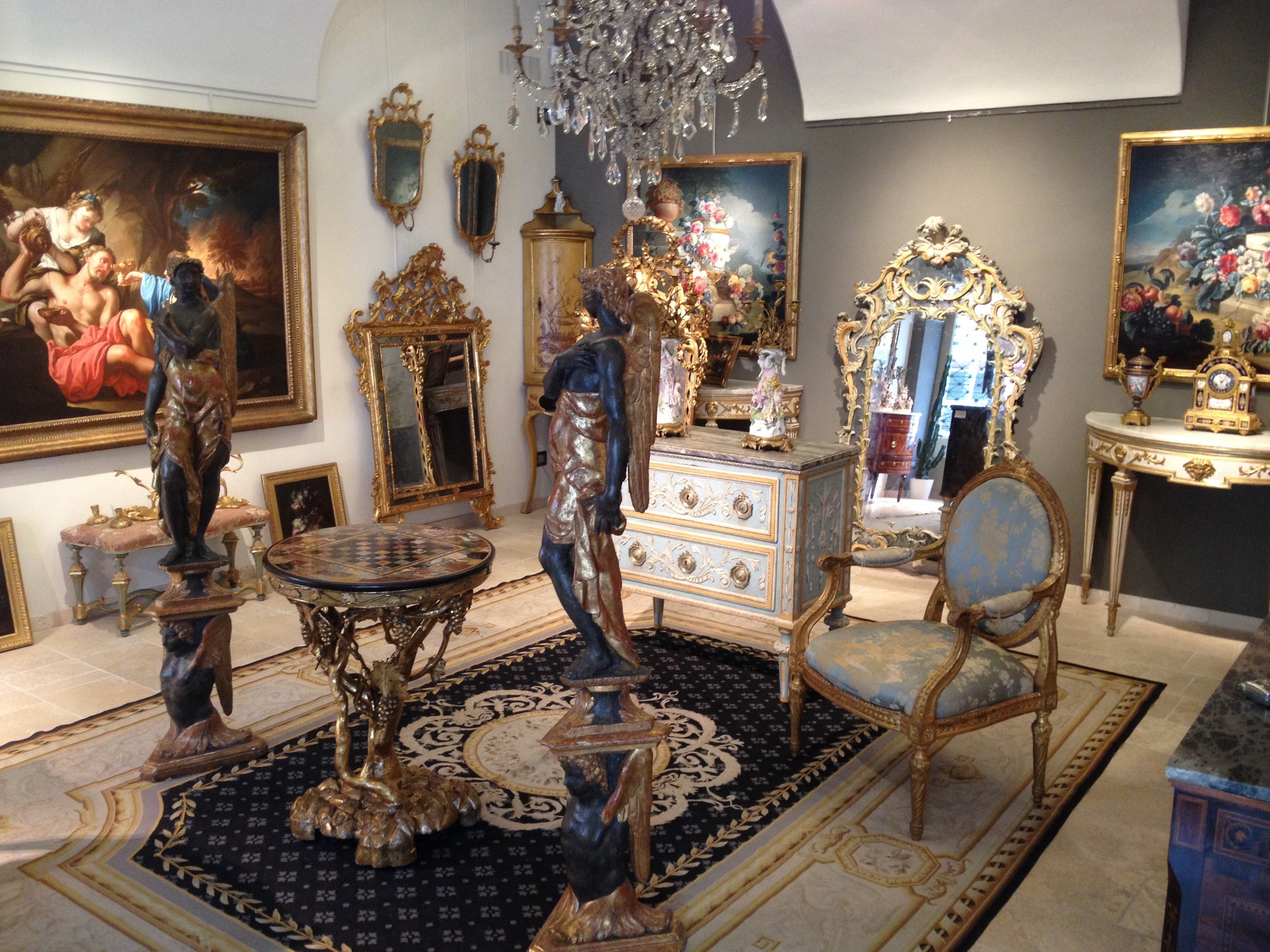
About the Seller
5.0
Platinum Seller
Premium sellers with a 4.7+ rating and 24-hour response times
Established in 1980
1stDibs seller since 2019
56 sales on 1stDibs
Typical response time: <1 hour
- ShippingRetrieving quote...Shipping from: Italy
- Return Policy
Authenticity Guarantee
In the unlikely event there’s an issue with an item’s authenticity, contact us within 1 year for a full refund. DetailsMoney-Back Guarantee
If your item is not as described, is damaged in transit, or does not arrive, contact us within 7 days for a full refund. Details24-Hour Cancellation
You have a 24-hour grace period in which to reconsider your purchase, with no questions asked.Vetted Professional Sellers
Our world-class sellers must adhere to strict standards for service and quality, maintaining the integrity of our listings.Price-Match Guarantee
If you find that a seller listed the same item for a lower price elsewhere, we’ll match it.Trusted Global Delivery
Our best-in-class carrier network provides specialized shipping options worldwide, including custom delivery.More From This Seller
View All18th Century Pair of French Gilt Bronze Sculptures on Marble Base
Located in IT
18th century pair of french gilt bronze sculptures on marble base representing Chinese figures
This particular and lovely pair of sculp...
Category
Antique Mid-18th Century French Louis XV Figurative Sculptures
Materials
Marble, Bronze
19th Century, Italian White Marble Sculpture by Pompeo Marchesi with Cupid, 1840
Located in IT
19th century, Italian white marble sculpture by Pompeo Marchesi with cupid, Italy, 1840
This valuable sculpture, made in white marble in 1840, is a work signed by Pompeo Marchesi....
Category
Antique 1840s Italian Romantic Figurative Sculptures
Materials
Marble
20th Century, Italian Sculpture by Helen König Scavini, Lenci Manufactory
By Helen Scavini, Lenci
Located in IT
Helen König Scavini, Lenci manufactory
"Nude of Woman", e.g. 1927-1936
Signed under the base "Lenci/Italy"
Glazed terracotta
sizes: H 70 cm x W front 83 cm (W back 55 cm) x D 55 cm
The important sculpture, realized in glazed terracotta, is by the famous Lenci Manufactory of Turin (Italy) on model by Helen König Scavini. Of remarkable dimensions, it represents a naked woman, covered of a single cloth to life, sitting with the legs flexed asymmetrically while it supports on the arms with the hands leaned to the plan. The woman has a hieratic expression, big eyebrow arches under which the ethereal eyes are half-closed; the open lips hide a hint of a smile. The loose hair is turned back with big waves on both the head and along the back. The staining of the glazing is on the tones of musky green, which contributes to confer to this woman the appearance of a nymph or a mythological figure.
Below the base is found, hand painted, the trademark of the manufacture "Lenci, ITALY". The brand Lenci was registered in Turin on 23 April 1919, sanctioning an activity undertaken some time before by Helen König, wife of the commercial agent Enrico Scavini. The origin of the word Lenci is still controversial today; the earliest bibliography says it derived from a endearment of Elena (Elenchen, as her father called her and that she, stunned him, pronounced Lenci) while the most recent one considers the acrostic Ludus Est Nobis Costanter Industria, perhaps invented by Ugo Ojetti or built as divertissement by the poet Ignazio Vacchetti (Alias Fantasio) on the endearment of Elena. The Lenci manufactory becomes a meeting point for artists and a forge of ideas for the development and realization of dolls and puppets, children’s furniture, and later also artistic ceramics. The first artists to take an active part in the enterprise were Giovanni Riva and Sandro Vacchetti, soon joined by other great names. The success of these felt dolls earned numerous awards to the Lenci Company during the international exhibitions in Zurich, Paris, Rome or Milan. However, the originality of Lenci’s creations was soon put to the test by numerous imitations. To cope with this type of competition, Lenci began to produce artistic ceramics, whose activity began in 1927. The ceramic figures became perhaps even more famous than the dolls in cloth. The subjects ranged from the famous "nudini", the chic little ladies and emancipated women, from fantasy characters to animals, from religious images to the most disparate vases and much more.
Many artists collaborated in the realization of the models, among which it is worth mentioning the already mentioned Sandro Vacchetti, artistic director of Lenci from 1922-1934, the same Elena König Scavini, Cläre Burchart, Lino berzoini, Giovanni Riva, Giovanni Ronzan, Deabate Theonesto, Giovanni Pietro Spertini, Marcello Dudovich, Gigi Chessa, Mario Pompei, Nillo Beltrami, Mario Sturani, Giulio Da Milano, Giovanni Grande, Ines Grande, Claudia Formica, Luigi Borione, Camillo Ghigo, Giuseppe Porcheddu, Gino Levi-Montalcini, Abele Jacopi...
Category
Vintage 1930s Italian Figurative Sculptures
Materials
Terracotta
$48,315 Sale Price
25% Off
18th Century, French Bronze Three-Light Candelabra with Female Figures
By Louis-Simon Boizot, François Rémond
Located in IT
18th century, French bronze three-light candelabra with female figures
This three-light candelabra is made of patinated and gilt bronze. It was made in France in the 18th Century....
Category
Antique Late 18th Century French Louis XVI Chandeliers and Pendants
Materials
Marble, Bronze
19th Century, French Marble and Gilt Bronze Centerpiece
Located in IT
19th Century, French Marble and Gilt Bronze Centerpiece
This particular centerpiece was made, in white marble and finely chiseled gilded bronze, in France between the end of the eigh...
Category
Antique 19th Century French Louis XVI Figurative Sculptures
Materials
Marble, Bronze
17th century, Pair of Italian Baroque Walnut Sculptures
Located in IT
17th century, Pair of Italian Baroque Walnut Sculptures
Measures: H 104 X W 60 X D 30 cm
The pair of sculptures was made in the Venetian area in Italy towards the end of the 17th ce...
Category
Antique Late 17th Century Italian Baroque Figurative Sculptures
Materials
Walnut
You May Also Like
French 19th Century Patinated Bronze And Marble Statue Of Venus At The Bath
Located in West Palm Beach, FL
A large scaled French 19th century patinated Bronze and marble statue of Venus at the Bath. Venus is raised by a handsome mottled Sanguine Oran Cipolin marble base and is holding a d...
Category
Antique 19th Century French Figurative Sculptures
Materials
Marble, Bronze
Bronze Statuette of Venus, 2nd Half 19th Century
Located in Greding, DE
Small dark patinated figure of Venus on round profiled plinth.
Category
Antique Mid-19th Century European Grand Tour Figurative Sculptures
Materials
Bronze
C19th Bronze Female Nude Sculpture on Marble Base
Located in London, GB
A Lovely Late C19th Bronze Sculpture of a Female Nude
European
Lovely Original Marble Base
Category
Antique 19th Century Unknown Art Nouveau Figurative Sculptures
Materials
Bronze
Italian "Bathing Venus" Patinated Bronze Sculpture
Located in Astoria, NY
Italian School, The Bathing Venus, Patinated Bronze Sculpture, late 19th century, cast by Fonderi Nelli Roma, the standing figure removing her elaborate robe on a circular base, stam...
Category
Antique Late 19th Century Italian Neoclassical Figurative Sculptures
Materials
Bronze
Early 19th Century Continental Grand Tour Bronze Sculpture of Venus de' Medici
Located in Nottingham, GB
This captivating early 19th-century Continental Grand Tour bronze sculpture of Venus de' Medici is a stunning representation of classical beauty and neoclassical artistry. Cast with remarkable detail, the figure portrays the renowned statue of Venus, revered for its grace, sensuality, and timeless elegance. The finely executed bronze finish, with its warm, aged patina, further enhances the sculpture's antique charm, making it a remarkable piece that captures both historical significance and artistic mastery.
The Grand Tour, a traditional journey undertaken by young Europeans in the 18th and 19th centuries to study classical art and culture, was an era that saw an increasing appreciation for classical sculptures, and this piece is a quintessential example of the era's influence on European decorative arts. Whether displayed as a centerpiece or as part of a larger collection, this Venus de' Medici sculpture evokes the grandeur of ancient Rome and the Renaissance period, embodying the pursuit of beauty that defined the neoclassical movement.
The Venus de Medici is an ancient Greek statue that represents the goddess Aphrodite (Venus in Roman mythology). It is a marble sculpture, dating back to the 2nd century BCE...
Category
Antique Early 19th Century Figurative Sculptures
Materials
Siena Marble, Bronze
19th Century Patinated Bronze Sculpture of a Dancing Female Figure
By Albert-Ernest Carrier-Belleuse
Located in Dublin 8, IE
19th century patinated bronze sculpture of a dancing female figure, possibly a sea nymph. The figure stands on a base of seashells and repouses twirling a drape around her body. It b...
Category
Antique 19th Century French Neoclassical Figurative Sculptures
Materials
Bronze
More Ways To Browse
Marble Cylinder
Goddess Venus
18th Century Marble Sculpture
Venus Sculpture Antique
Bronze Goddess
Venus Bronze
Venus Marble
Naked Sculptures
Italian Neoclassical Marble Sculpture Of Venus
Venus De Medici
Italian Venus Bronze Sculpture
Bronze Greek Goddess
Art Deco Plaster Sculpture
Resin Art Deco
Vintage Art Deco Female
Apple Sculpture
Cherub Heads
Commedia Dell Arte
